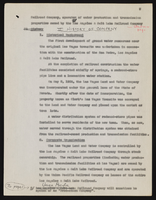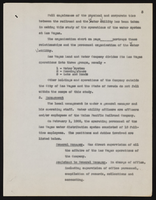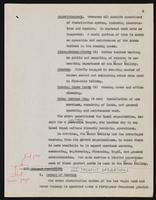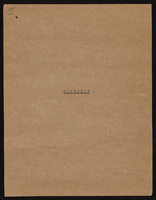Search the Special Collections and Archives Portal
Search Results
Siegel, Bugsy, 1906-1947
Benjamin "Bugsy" Siegel (1906-1947) was a well-known Las Vegas, Nevada casino investor and manager, most famously associated with the Flamingo and organized crime. Born Benjamin Siegelbaum in Brooklyn, New York on February 28, 1906, Siegel formed the Bug and Meyer Mob with Meyer Lansky while he was still a teenager. Later, Siegel was a founding member and chief operator of "Murder, Inc.," an organized crime "enforcement" group.
Person
Pagination
Refine my results
Content Type
Creator or Contributor
Subject
Archival Collection
Digital Project
Resource Type
Year
Material Type
Place
Language
Records Classification







